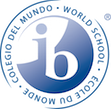The Lake Elsinore Unified School District (LEUSD) is committed to ensuring equal, fair, and meaningful access to employment and educational services. The District does not discriminate in any employment practice, educational program, or educational activity on the basis and/or association with a person or group with one or more of these actual or perceived characteristics of age, ancestry, color, disability, ethnicity, gender, gender identity or expression, genetic information, immigration status, marital status, medical condition, national origin, political affiliation, pregnancy, and related conditions, race, religion, retaliation, sex (including sexual harassment), sexual orientation, Vietnam Era Veterans’ status, or any other basis prohibited by California state and federal nondiscrimination laws respectively. Not all bases of discrimination shall apply to both educational services and employment. Inquiries regarding nondiscrimination and civil rights should be directed to Title IX Coordinators of the Lake Elsinore Unified School District.
Accessibility

